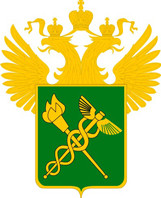
Anniversary of Trade Regulations of 1653
October 25 (November 4) 1653 Tsar Alexei Mikhailovich signed a decree "On the levying of customs duties on goods in Moscow and in cities, with an indication of how much was taken and from which goods", which initiated the creation of a single customs system in Russia.
Growth of the Russian domestic and foreign trade required the establishment of certain rules of transit of goods and payment of the customs duties and fees on imported and exported goods to the state treasury. Basis for elaboration of customs certificates (Trade Regulations) was a petition of top circles of merchants submitted in August of 1653. Sales people in Moscow and other cities demanded the right to confiscate goods not declared to customs; mandatory issuance of "accounts" with a list of commodities for traders, traveling in other cities; entitlement of searches of all persons to prevent free trade.
Adopted on 25 October (November 4) 1653 Trade Regulations abolished many small trade charges which remained since the time of feudal division and replaced them all with a so-called ruble fee: 10 kopecks per ruble for the sale of salt, 5 cents per ruble for all other goods. Various travel duties were canceled that Russian merchants paid for transporting goods from one city to another, at the same time fees paid at shopping arcades and wide river crossings remained. In addition, the increased fee was introduced for foreign merchants who sold goods in Russia, which proved the intention of Tsar’s Alexei Mikhailovich government to promote domestic trade. Foreign merchants were obliged to pay 6% on the price of goods at domestic customs and 2% of travel duties at border customs on the export Russian goods.
The Regulations stated penalties for violation of customs rules.
In 1654, based on the Trade Regulations, the statute charter was drafted according to which it was prohibited to charge travel fees in the realms of secular and spiritual lords, and soon began an attack on the privileges of foreign merchants, who were allowed only a wholesale only in the border towns. Retail trade, thus was shielded from foreign competition.
April 22 (May 2) 1667, due to a new petition of merchants and with the participation of their representatives, tsar adopted a New Trade Regulations, drawn up on the basis of the relevant legislation of previous years, which further increased customs duties from foreign traders. The New Trade Regulations of 1667 had been in force along with the Trade Regulations of 1653 until the mid 1750's when it was replaced by the Customs statute of 1755.
August 4, 1995 under the RF President Decree N 811 "On establishing the Day of a customs officer of the Russian Federation" was established the professional holiday for customs officers, which is celebrated annually on October 25.
Lit.: Аграшенков А. В., Краснянский И. Ю. Борьба с контрабандой в России (X — начало XX в.) // Правоведение. 1998. № 4. С. 70-80; Габричидзе Б. Н. Таможенное право. М., 1995; Кисловский Ю. Г. История таможни государства Российского, 907-1995. М., 1995; Лодыженский К. История русского таможенного тарифа. СПб., 1886; Таможенное дело в России: Сб. документов и материалов. Т. 1: 907-1721. М., 1996.
Based on the Presidential Library’s materials:

